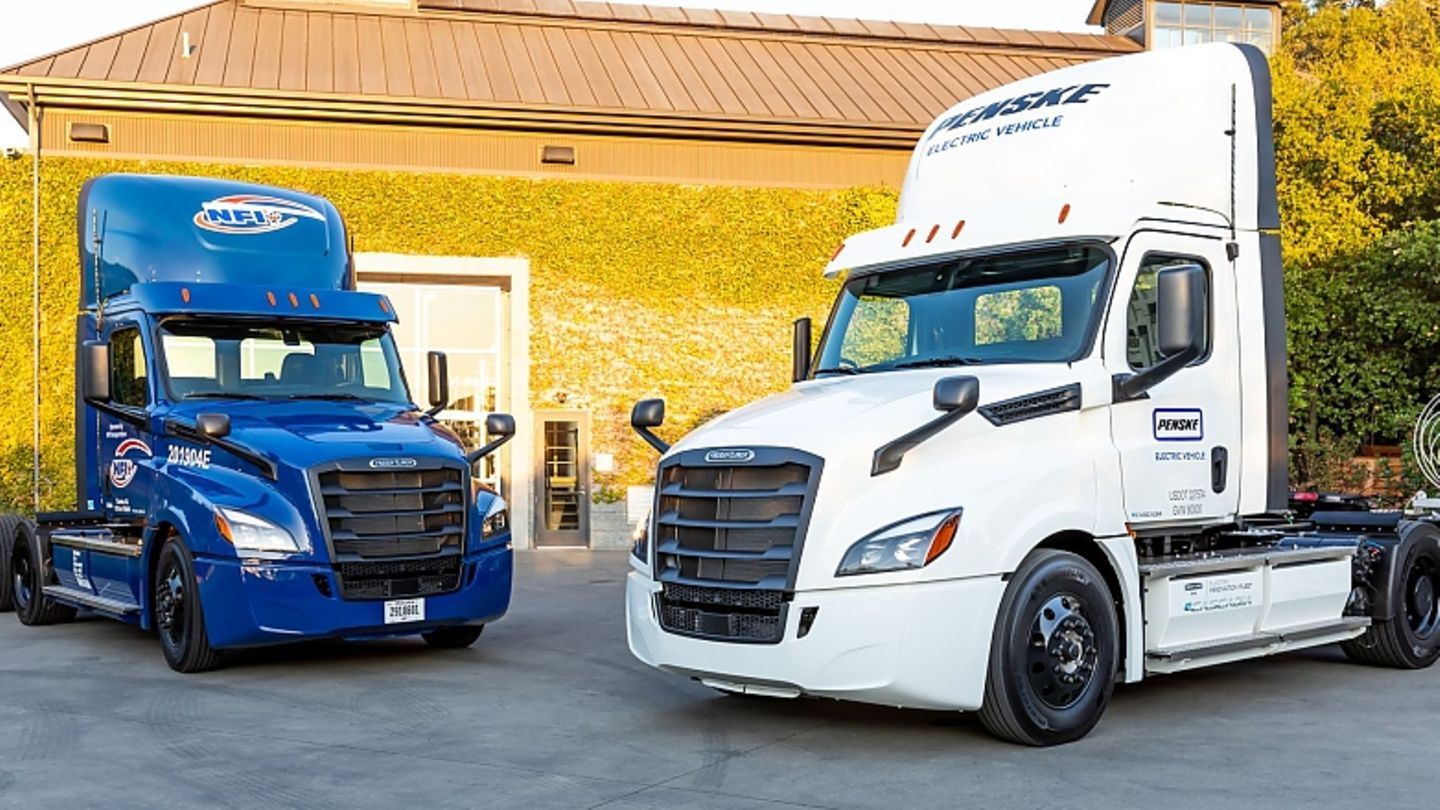Later this year, Daimler Truck North America will release an electric version of the Freightliner Cascadia. CTO Dr. Rainer Müller-Finkeldei explains why this still works, in which areas an electrically powered truck even has advantages over a car and why a battery technology transfer from cars to trucks is not easily feasible.
Dr. Müller-Finkeldei, Daimler Truck North America is bringing an electrically powered truck onto the market for the first time with the Freightliner eCascadia. How is that supposed to work in the USA with the long distances? dr Rainer Müller-Finkeldei: We talked to our customers right from the start. The question is not whether we can build such a vehicle, but whether the customer can do his job with it. The feedback clearly shows that there are segments in which companies can cope with the reach possible today. In distribution transport, customers drive the same route every day, knowing exactly where they are driving, how much payload they need and how long they can charge at night. This predictability is a major advantage of a truck over a car when it comes to the battery-electric variants. Does that mean specifically? how many miles Müller-Finkeldei: We are now starting with the eCascadia in the distribution segment and a range of a good 200 miles. Charging usually takes place at night in the depot. This is different from the car, where you need a public charging structure. What are the technical framework conditions like? Müller-Finkeldei: Among other things, the battery has a capacity of more than 400 kilowatt hours and allows a payload of around 16 tons. That’s about two tons less than the conventionally operated Cascadia. They can make all the difference in the cost-sensitive logistics sector… Müller-Finkeldei: That depends on the intended use. In the case of transports in which the load has a large volume, the customer can easily live with this restriction. With steel plates, the weight is of course the decisive factor, so the company has to adapt its operations to these circumstances. Nevertheless, the advantages are manifold. An electrically operated truck is emission-free, and the pressure to stop generating emissions is growing, especially in urban areas. This also increases the acceptance of the commercial vehicle. Does this also change the relationship with the customer? Müller-Finkeldei: Yes. In the future it will not be enough to offer a truck. We also help the fleets to provide the charging infrastructure and offer the necessary services. That means we support the customer in the transition phase to the electric truck, so that he gets the right vehicle configuration with the appropriate battery capacity for his purpose, for example. The customer should not buy a battery that is larger than what he needs. That would be unnecessary weight that the truck drags around. How far does the advice go? Müller-Finkeldei: We offer an all-round carefree solution, so to speak. We use computer simulations to show customers how their electric vehicles can be used. This is one of the reasons why we founded the Electric Mobility Group, which is also responsible for the charging infrastructure. These are the experts who work with the companies and the energy suppliers to find a tailor-made solution where connectivity also plays a major role. How did customers react to the electric trucks? Müller-Finkeldei: Absolutely positive. In the sense of “Let’s do it!”. Here we work together with highly professional logistics companies such as Penske, NFI, Schneider or Ryder, who operate tens of thousands of vehicles of dimensions that are unimaginable in Europe. These are exactly the customers who give us the feedback we need to get the trucks on the road. When will the trucks be with the customers? Müller-Finkeldei: Very soon. We will not only be presenting our new Freightliner eCascadia shortly, but also an electric Freightliner eM2 next year with a maximum permissible total weight of twelve tons, which will be used primarily in local distribution and delivery traffic over the last mile. We are already working on the next generation of vehicles because battery technology is developing incredibly quickly. By the end of the decade or maybe even earlier that comes out, then we’re going to broaden out and significant portions of the business will be E. Is a coexistence between hydrogen trucks and those powered by batteries possible? Müller-Finkeldei: Yes, absolutely. Currently, our battery-powered trucks can cover more than 200 miles, but we have our sights on more than 300 miles, which could happen in the second half of this decade. Maybe even 500 miles are possible at some point, but anything beyond that is difficult to implement with the battery technology available in this decade. But in this country we need vehicles with even more range. If you want to achieve zero emissions, hydrogen is the best solution. Another advantage is that hydrogen can be stored, but electricity must be available immediately when charging. With the Vision EQQX, Mercedes has achieved a range of more than 1,000 kilometers with a battery that is only half the size of that of the EQS. If batteries are shrinking like that, isn’t that also a solution for trucks? Müller-Finkeldei: It’s not that easy. Because with trucks, in contrast to cars, we have to pay attention to special things with the batteries. On the one hand, completely different forces are at work in a truck, so we have to design these batteries to be much more robust than is the case in a car. Then the ratio of reliability and performance is very important. It’s all about the balance between size and weight, and the battery also has to last the entire life cycle of a truck. Do solid-state batteries play a role in your plans? Of course, we are also taking a close look at this technology. We announced a bus with solid state batteries, but the charging cycles and driving behavior of a bus are different than a truck that drives at a constant speed on the highway. At the current stage of research, solid-state batteries are not yet suitable for trucks.
Source: Stern
I am a 24-year-old writer and journalist who has been working in the news industry for the past two years. I write primarily about market news, so if you’re looking for insights into what’s going on in the stock market or economic indicators, you’ve come to the right place. I also dabble in writing articles on lifestyle trends and pop culture news.




